Phnom Penh is a vibrant city on the move, and there’s lots to do, from films and documentaries to art galleries and architecture.
Cambodian Living Arts arts performance
Cambodian Living Arts is one of the country’s most respected non-profit organizations, dedicated to preserving traditional Khmer art forms including dance, theater, music, and puppetry. Myriad restaurants in both Siem Reap and Phnom Penh offer traditional dance performances that are a weak imitation of the real thing. Cambodian Living Arts has worked to revive the artistic traditions that were nearly lost during the Khmer Rouge era, helping the master artists who survived to continue with their craft while also training disadvantaged young people in traditional arts.
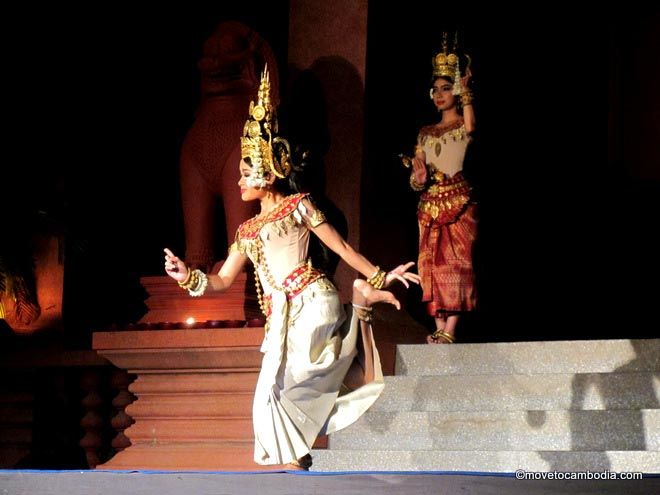
Learn more about Cambodian culture by watching an authentic apsara dance performance.
In Phnom Penh they offer dance performances (including traditional apsara dance), theater, shadow puppet shows, and musical theater. The shows are entertaining and beautiful, offering fascinating insight into historical provincial Cambodian life and culture. Each performance starts at 7 p.m. and is an hour long. Tickets cost $15 for foreigners and $5 for Cambodians. The shows run year round, but during the high season they have shows more often. Check their site for the most current schedule.
In front of the National Museum, Street 13 and Street 178, Daun Penh, Phnom Penh
T: 023 986 032
cambodianlivingarts.org
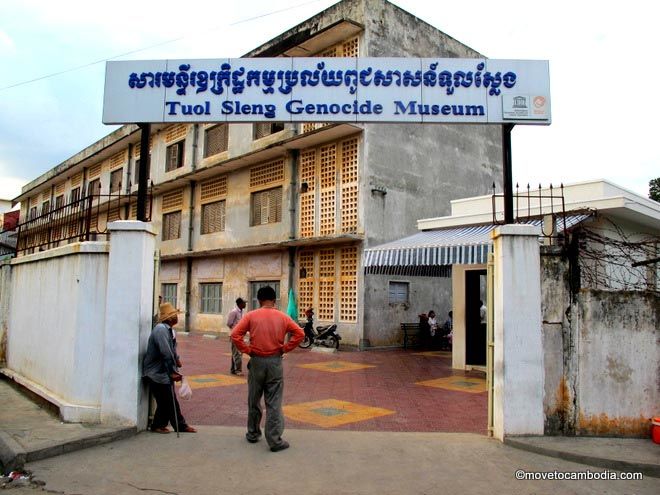
Tuol Sleng (also known as S-21) very quickly puts the horrors of the Khmer Rouge era into stark perspective.
Tuol Sleng Genocide Museum S-21
If you’re looking to understand the Khmer Rouge era, Tuol Sleng (also known as S-21) very quickly puts its horrors into stark perspective. The site, formerly a high school, became one of the Khmer Rouge’s execution and torture centers for the duration of Khmer Rouge rule, from 1975 to 1979. The site’s victims came mostly from within the ranks of the Khmer Rouge itself; the movement’s leaders were deeply paranoid and suspicious of their own cadets, many whom ended up, along with their families, in Tuol Sleng. The detainees had their photos taken before confessions were tortured out of them and they were killed. A gallery of these solemn black-and-white headshots offers a powerful reminder of the savagery of the Khmer Rouge era. The S-21 building has been preserved as it was found by the invading Vietnamese army in 1979, including the classrooms converted to torture rooms. Photos now hang in these rooms showing them as they were on the day the building was found, corpses and all. If you don’t know much about the Khmer Rouge era, read up on it before you go to Tuol Sleng, because the museum itself will leave a lot of questions unanswered. Cost of admission is $2.
Open daily, 8 a.m. to 5 p.m.
Corner of Street 113 and Street 350, Tuol Sleng, Phnom Penh
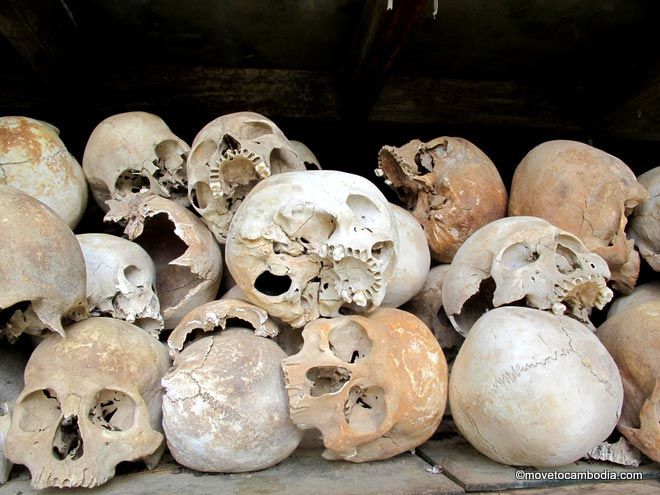
The “killing fields” is a popular stop for tourists, but there are good reasons to skip it.
Choeung Ek… the Killing Fields
Choeung Ek Genocidal Center, more commonly referred to as the “killing fields,” is a one-time fruit orchard that became the site of thousands of brutal Khmer Rouge executions; many of the victims were prisoners from S-21. The site has been turned into a museum and memorial, and there’s a large stupa where visitors can pay their respects and see a collection of thousands of skulls excavated from a mass grave in 1980. Recently the human guides who used to work in the site have been replaced with audio guides. Some kind of guide is necessary, because the site itself has very little information about what happened there. But the absence of human guides means there’s no really Cambodian element to the site, which is essentially a testimonial to violence (and, of course, skulls). Although many consider the “killing fields” a must-see, others argue that it is disrespectful to Cambodian Buddhists, who believe remains should be cremated. Critics also point out that the profits from admissions go to a Japanese company, JC Royal.
Cost is $6 per person and includes an audio guide. The site is located 17 km south of Phnom Penh. Expect to pay $15 to $20 for a round-trip tuk tuk to the site, but you can often include stops to S-21 and the Royal Palace as part of the price.
Open daily, 7:30 a.m. until 5:30 p.m.
Roluos Village, Sangkat Choeung Ek, Phnom Penh
T: 023 305 371; 012 341 237
See a movie
If the Phnom Penh heat is killing you, the most sensible option is to head to one of the city’s many air-conditioned movie theaters. There are quite a few big cineplexes in town these days, all showing English-language blockbusters, as well as some smaller movie houses, including The Empire, Meta House, and the Flicks, offering more eclectic selections,
For more information on the best cinemas in Phnom Penh, see our blog post about Phnom Penh movie theaters.
National Museum
The outside of Phnom Penh’s National Museum is probably the most interesting thing about the place, unless you’re an archaeological scholar. Construction of the rust-colored building began in 1917 by George Groslier, a French citizen who was born in Cambodia. The building’s design is based on the country’s wats and pagodas, as interpreted by a foreigner, and the result is even more ornate than the real thing. The museum has more than 2,000 objects on display, most from the Angkorian era, including an extensive collection of statues and lingas. (They’ve got an additional 10,000 objects in storage that aren’t being shown.) The exhibitions have very limited printed information, so if you want to learn more it’s recommended that you hire a guide for an extra $6, or read up before you go. Tickets cost $10 for foreigners and 1,000 riel for Cambodians, and visitors are requested to dress respectfully.
Open daily, 8 a.m. to 5 p.m.
Street 13 at Street 178, Daun Penh, Phnom Penh
T: 023 211 753
cambodiamuseum.info
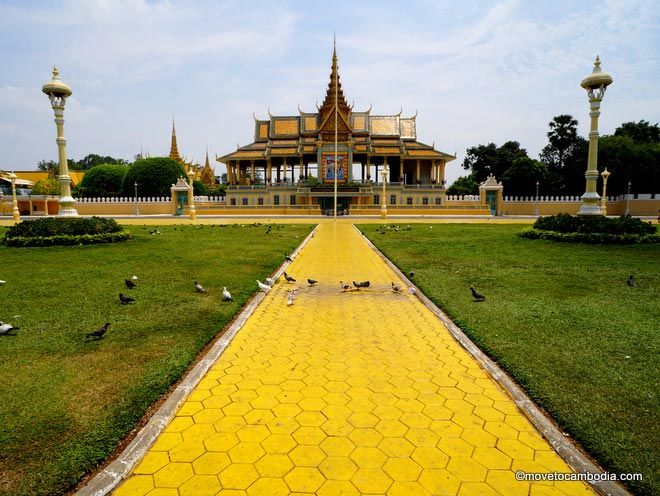
Follow the yellow brick road to Phnom Penh’s Royal Palace.
Royal Palace
Located in front of the river where the Tonle Sap meets the Mekong, Phnom Penh’s Royal Palace is the official residence of Cambodia’s king and royal family. The complex is comprised of several buildings, including the one most visible on the Phnom Penh skyline, the Chanchhaya Pavilion, with its gleaming golden spire. Most buildings on the grounds are open to the public, including the famous Silver Pagoda, which is known for its solid silver floors and its collection of priceless religious objects. The perfectly manicured gardens contain many interesting tropical specimens that plant lovers will enjoy.
Visitors must keep knees and shoulders covered or they may be denied admission. Admission costs 40,000 riel ($10, and a guide costs an additional $10 per hour. For a map of the Royal Palace complex and more information, see the free Canby Guide.
Open daily, 8 a.m. to 11 a.m. and 2 p.m. to 5 p.m.
Sothearos Blvd, Daun Penh
Bophana Center
Bophana Center is housed in a big 1960s modernist villa and was co-founded by internationally award-winning Cambodian filmmaker Rithy Panh. Upstairs are computers that have exclusive access to worldwide archives of audiovisual materials about Cambodia. It’s free to access and a great way to while away an afternoon, watching historical newsreel footage or even whole documentaries and feature films. Downstairs is a gallery that hosts both historical exhibitions and shows by contemporary Cambodian artists, usually with public programs like talks and screenings. There’s also a small cinema room on site with regular screenings of historical and recent films.
Open Monday to Friday, 8 a.m. to 12 p.m. and 2 p.m. to 6 p.m. and Saturday, 2 p.m. to 6 p.m.
64 Street 200, Phnom Penh
T: 023 992 174
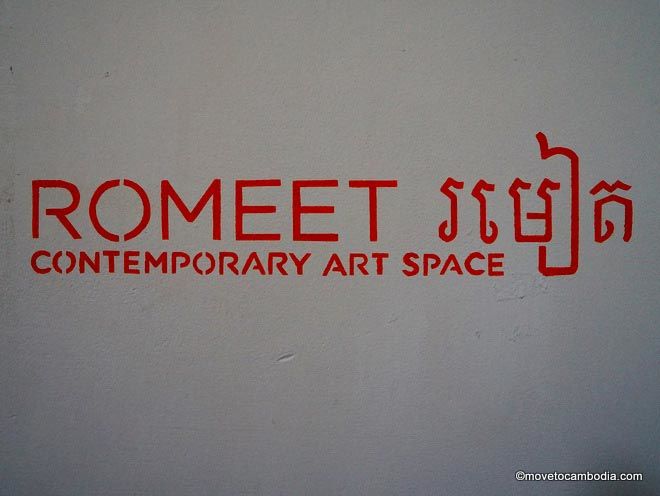
Visit a contemporary art gallery in Phnom Penh to get a taste of the local art world.
Art galleries
Sa Sa Bassac is a contemporary art gallery that features the work of both up-and-coming and established Cambodian artists. It can be a bit hard to find — it’s just a few doors down from the U-Care Pharmacy behind FCC and up a narrow set of stairs. Look out for a small white sign above the door on the east side of Sothearos Blvd. The gallery is a big “white cube” space with concrete floors and high ceilings, looking much like the galleries you might find in any other city. A reading room at the back has the city’s best dedicated collection of books on arts and culture, in both Khmer and English, free to browse. Exhibitions by Cambodian and sometimes regional artists are usually accompanied by talks or other events, and the helpful staff can give you a free brochure about the work on display.
An offshoot of the Phare Ponleu Selpak art school in Battambang, Romeet Contemporary Art Space hosts contemporary art exhibitions — mostly of Phare Ponleu Selpak students and graduates — as well as talks, workshops, and local and international collaborations. The gallery is located above Blue Chilli on Street 178. Most of the work is painting, often dealing with the artists’ painful memories and difficult childhoods.
Java Cafe and Gallery is one of the city’s longest-running privately owned art spaces, exhibiting artworks by both Cambodian and foreign artists on the walls of the cafe. Head upstairs for the current exhibition, or go outside along the driveway and past the cafe to the small office and showroom at the back, to see a selection of works from the past decade and a half.
Sa Sa Bassac
Open Thursday and Friday, 2 p.m. to 6 p.m., Saturday and Sunday, 10 a.m. to 6 p.m.
18 Sothearos Blvd, 2nd Floor, Phnom Penh
T: 017 774 864
sasabassac.com
Romeet Contemporary Art Space
Open Tuesday to Friday, 10 a.m. to 6 p.m. and Saturday 11 a.m. to 6:30 p.m.
34E1 Street 178, Phnom Penh
T: 092 953 567; 077 550 759
romeet.com
Java Cafe and Gallery
Open daily, 7 a.m. to 10 p.m.
56 Sihanouk Blvd, Independence Monument area, Phnom Penh
T: 023 987 420
javacafeandgallery.com
Khmer Architecture Tours
Visitors to Cambodia often go to visit the Angkor temple complex but ignore the stunning examples of modern Khmer architecture that are hidden in plain sight in Phnom Penh. Cambodia achieved independence from the French in 1953, and the two decades thereafter were a golden age for Cambodian architecture. Known as New Khmer Architecture, the style drew on traditional Khmer and Angkorian elements and combined them with the modernist approach that was popular worldwide at the time. The most famous Khmer architect was Vann Molyvann, and his work can be seen all over Phnom Penh, although much of it is under threat due to the encroachments of development.
You can see it all before it’s too late by going on one of the Khmer Architecture Tours. They offer free walking tour maps that can be downloaded on their site. (Canby also has an interesting guide to Phnom Penh architecture that includes a free walking tour: http://www.canbypublications.com/phnompenh/phnom-penh-architecture.htm) Khmer Architecture Tours also offers guided tours via cyclo or bus led by Cambodian architecture students. Tours are two to three hours long and cost $8 to $15 per person. They also offer private guided tours by cyclo or tuk tuk for up to 12 people. During high season it’s advisable to book in advance.
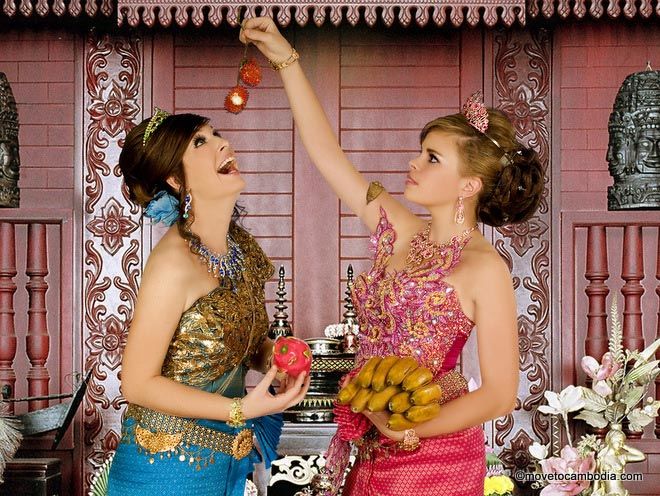
Getting Cambodian studio portraits taken can be a harrowing experience, but well worth the effort.
Khmer Studio Portraits
In Cambodia studio portraiture is taken seriously. It’s common to have family portraits taken in photo studios, as well as engagement and wedding photos in brightly colored traditional Cambodian garb. There are hundreds of photo studios in Phnom Penh, and they all have costumes on hand in a variety of different styles. Photos usually cost between $10 and $25, but check the prices up front so there are no surprises. The price generally includes a set of printed photos (there’s usually a $2 additional charge for a DVD), as well as costume rental and hair and makeup for women, which generally includes several sets of huge fake eyelashes.
To get your own studio portrait, just walk into any photo shop in the city; you’ll see portraits outside and camera logos. The studios are in the back, so don’t worry if you walk in and don’t immediately see any costumes. While all of the studios are perfectly adequate, SPK on Monivong Blvd, while not the cheapest, seems to be an expat favorite.
We’ve got a whole blog post about getting portraits taken in Cambodia, with tips on how to get the best photos possible.
Meta House
Meta House at the German Cambodian Cultural Center shows independent films and English-language documentaries at 7 p.m. every night of the week except Monday.
They have a full bar and restaurant and often follow screenings with talks by the directors or creators. On weekends the evening concludes with a DJ spinning tunes, so you can make a whole night out of it. Many of the films shown here are about Cambodia or the region. Admission is free, but the screenings and events take place on the building’s rooftop, so don’t forget to load up on some mosquito repellent.
37 Sothearos Blvd, Phnom Penh
T: 010 312 333
meta-house.com
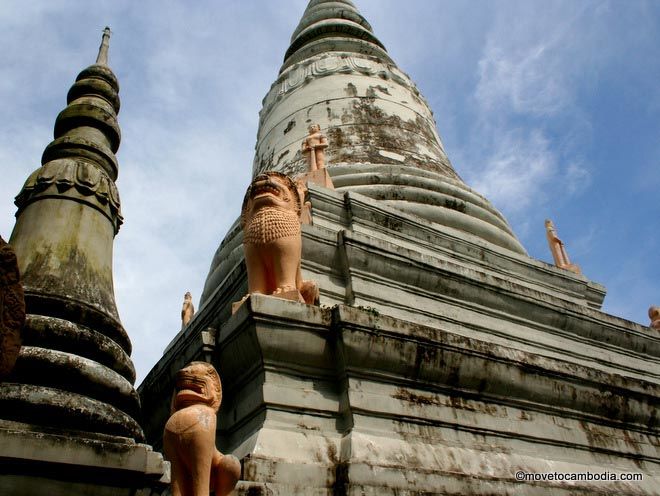
Wat Phnom: the city’s most important religious monument surrounded by classic Phnom Penh mayhem.
Wat Phnom
Wat Phnom is a pagoda located on Phnom Penh’s only hill, and the one it was named after. The Buddhist temple atop the hill is the city’s most important (and highest) religious monument. Locals come here to pray for promotions and good test scores, and leave offerings of fruit and flowers when their prayers are answered. It’s also a popular place to celebrate Khmer New Year and Pchum Ben. The surrounding park is classic Phnom Penh mayhem: common sights include beggar children, fortunetellers, sex workers, motodops, monkeys, and women selling the chance to free caged birds, which are, however, trained to fly right back to their cages. Entrance fee is $1 for foreigners.
Open daily, dawn until dark
Street 96 and Norodom Blvd, Daun Penh, Phnom Penh
Got a correction for one of our listings? Submit it here.